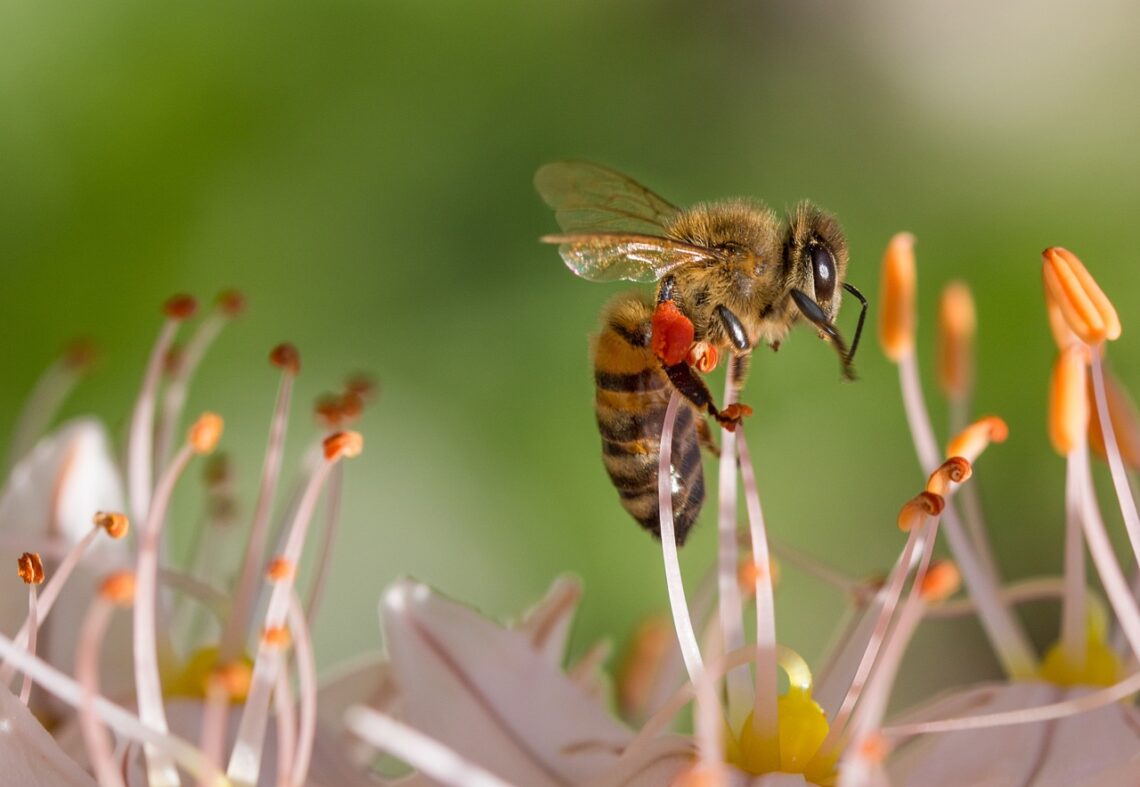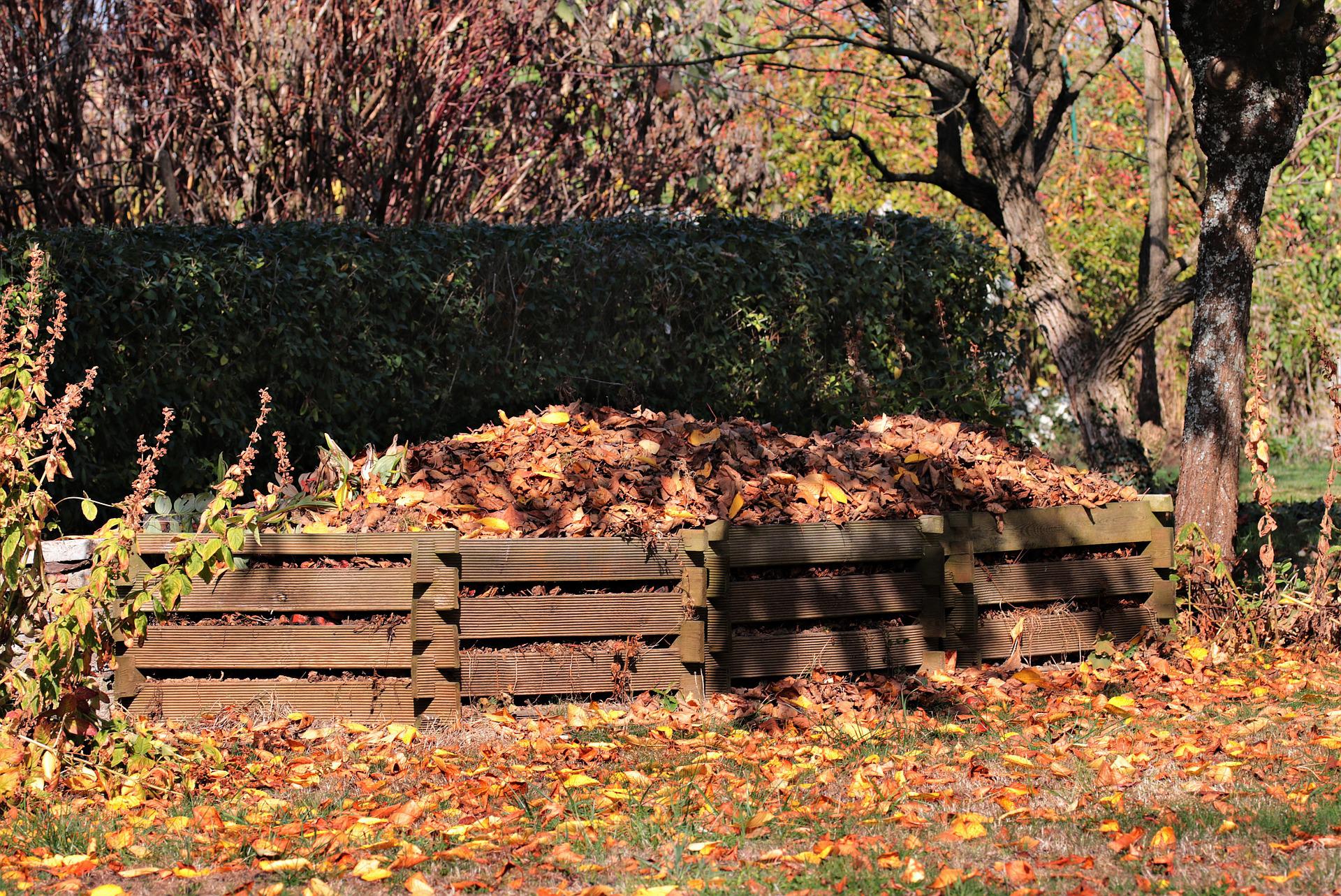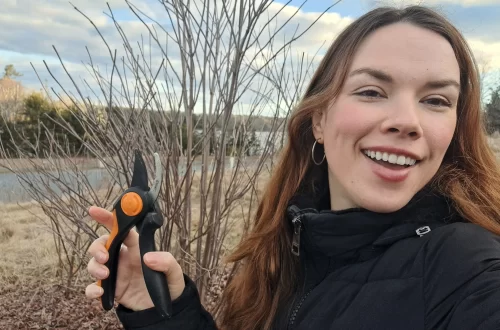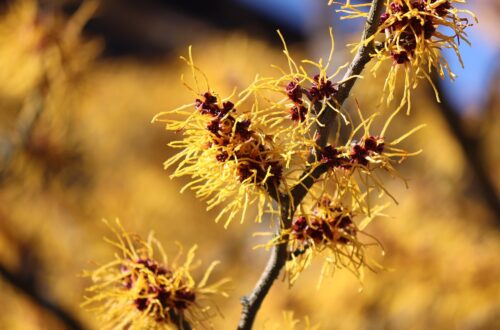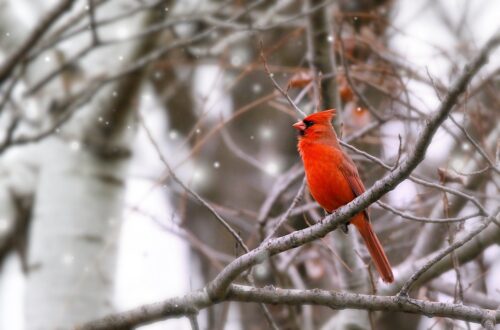Help pollinators make a comeback with these pollinator gardening tips!
When most people think about pollinators, they think about bees, butterflies, and hummingbirds. But there are lots of other pollinator species that are just as important for plant health, boosting garden harvests, and preserving the biodiversity that’s essential in a healthy landscape.
If you want to attract native butterflies and bees to your garden, this guide will help. But you’ll also find tips for attracting lesser known pollinators and helping beneficial insects on a larger scale. Best of all, you don’t need a large garden to make a difference and you can even help pollinators with just a few potted plants on a small balcony or patio space!
Affiliate disclosure: As an Amazon Associate, I may earn commissions from qualifying purchases
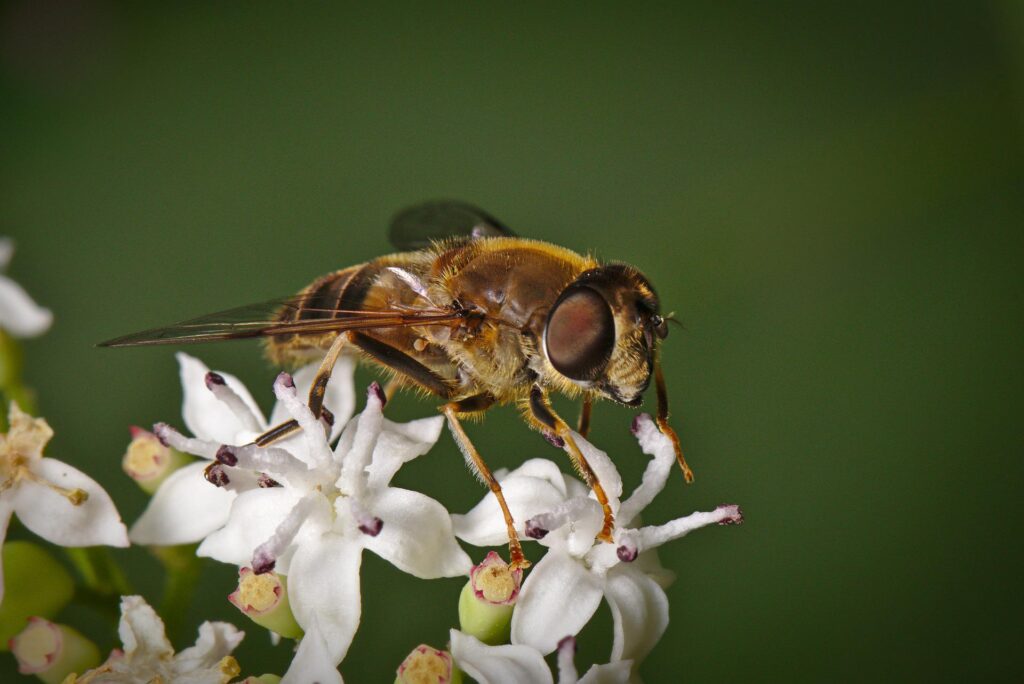
What Are Pollinators?
Put simply, pollinators move pollen from flower to flower and help plants reproduce. Many pollinators visit flowers in the pursuit of nectar and pollen for eating, but other pollinators are “incidental pollinators” that visit flowers in search of something else (like insect prey!)
While bees, butterflies, and hummingbirds are the most well-known pollinators, there are other important pollinators to be aware of. Some lesser known pollinators include:
- Beetles, like fireflies and ladybugs
- Wasps … yes, they can be “good guys!”
- Mosquitoes Pro-tip: Only female mosquitoes drink blood, male mosquitoes pollinate flowers)
- Flies, including hoverflies
- Ants
- Birds
- Bats
- Rodents
- Frogs
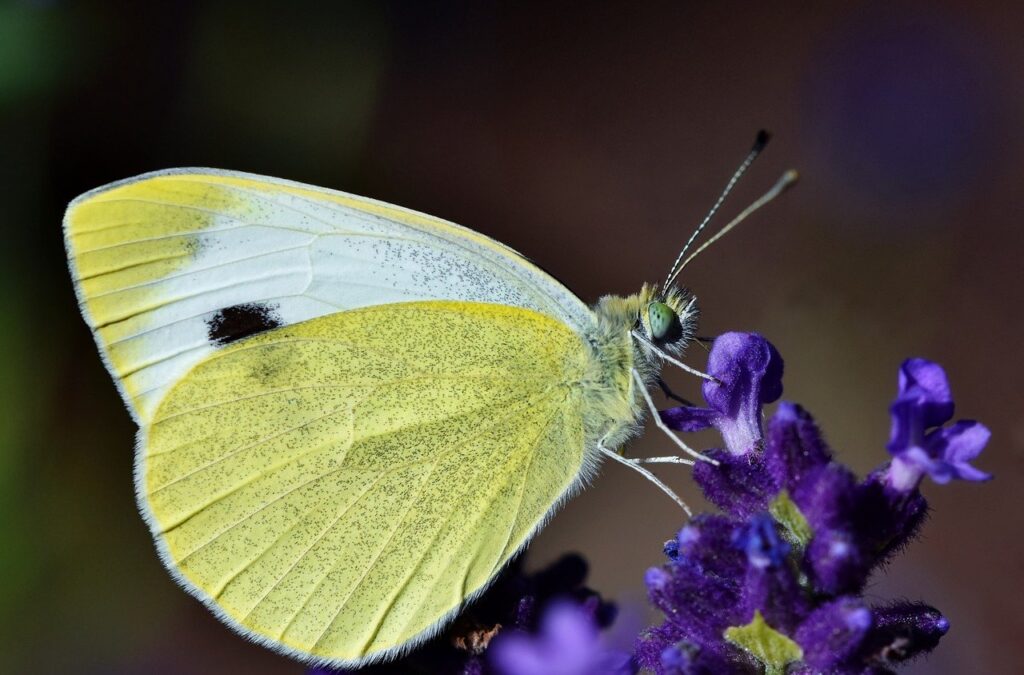
Why Are Pollinators Important?
Pollinators are fascinating to watch, but they’re also essential critters that are tied to the health of our planet and our own food security.
Approximately 1/3 of the world’s food supply depends on the work of pollinators. In fact, the USDA valued the work of pollinators at a whopping $18 billion dollars annually. (Although I’d argue that the value of pollinators can hardly be quantified!)
In the larger food web, pollinators pollinate native plants and wildflowers that other birds and animals depend on. On a smaller scale, pollinators also help to boost the yields of garden plants, like squash and cucumbers. And as many gardeners can tell you, in the absence of pollinators, many of these plants won’t fruit unless they’re pollinated by hand with a Q-tip.
I could go on, but let’s leave it with one final point. Pollinators preserve the genetic diversity of plants by cross-pollinating flowers. This helps safeguard food crops and other plants against diseases and pests that can affect a particular plant or plant cultivar.
In short: our future and the future of pollinators are inextricably linked!
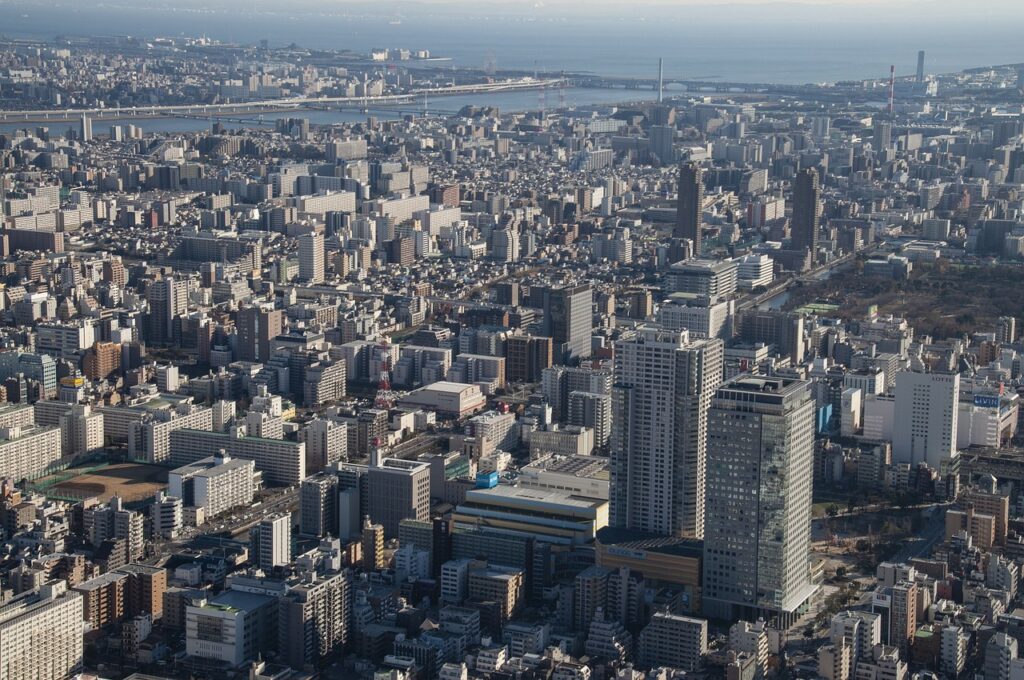
Why Are Pollinator Populations Declining?
Most of us know that many pollinator populations are threatened. By why is that?
Well, it comes down to a number of factors, but four issues stand out:
- Habitat loss and fragmentation.
Large scale deforestation and urbanization are part of the issue, but highways, fencing, and buildings can also break up habitats and make it harder for pollinators to navigate urban areas… But that’s why a small window box can have an impact. It gives pollinators a stopping spot as they navigate the concrete jungle!
- Climate change.
With the changing climate, plants are increasingly blooming out of sync with pollinator activities. This is particularly challenging for migrating pollinators who may not find food sources on their migration path.
- The overuse of pesticides.
Many pesticides don’t discriminate between pest insects and pollinators.
- Invasive species.
Invasive insects, like mites, directly affect some species of pollinators. But invasive plants can also outcompete native plants, alter ecosystems, and impact pollinator food resources. Rather than controlling invasives with herbicides, I use hand pulling and repeated cutting, and smother invasive out with tarps and heavy materials like cardboard.

How to Help Pollinators with a Pollinator Garden
I talk about pollinators a lot and I consider pollinator gardening to be an essential part of helping pollinators make a comeback. Of course, there are other steps to take, but growing a garden that benefits pollinators is something that most of us can do right now… and it does make a difference. If you’re growing in a small space, try adding a few pollinator-friendly plants, but if you want to make the biggest impact you can, consider pollinator safety and add food, water, and sheltering resources too!
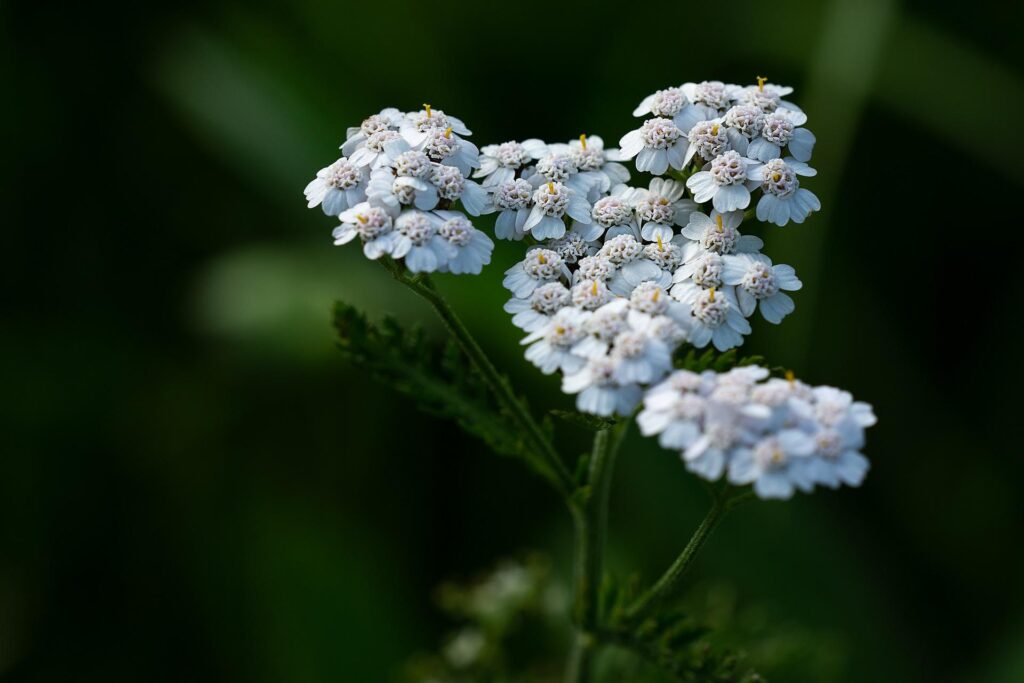
Food
One of the absolute best ways to help pollinators and increase pollinator activity in your garden is to plant flowers for bees and butterflies, as well as other insects. And the absolute best plants for pollinators? Native plants of course!
Native plants and wildflowers evolved side by side with native pollinators, which means they “know” what native pollinators want! Native plants are especially well-suited to the needs of native pollinators and studies have found that native plants are 4 times more attractive to native pollinators than non-natives.
What plants are native to your area will vary, but some of the best native plants that attract hummingbirds and butterflies and other pollinators include:
- Yarrow
- St. John’s Wort
- Milkweed
- Cardinal Flower
- Coneflowers
- Boneset
- Turtleheads
- Buttonbush
- Great Blue Lobelia
- Ironweed
- Virginia Creeper
- Common Violets
- Joe Pye Weed
- Mountain Mint
- Black-Eyed Susan
- Asters
- Goldenrod
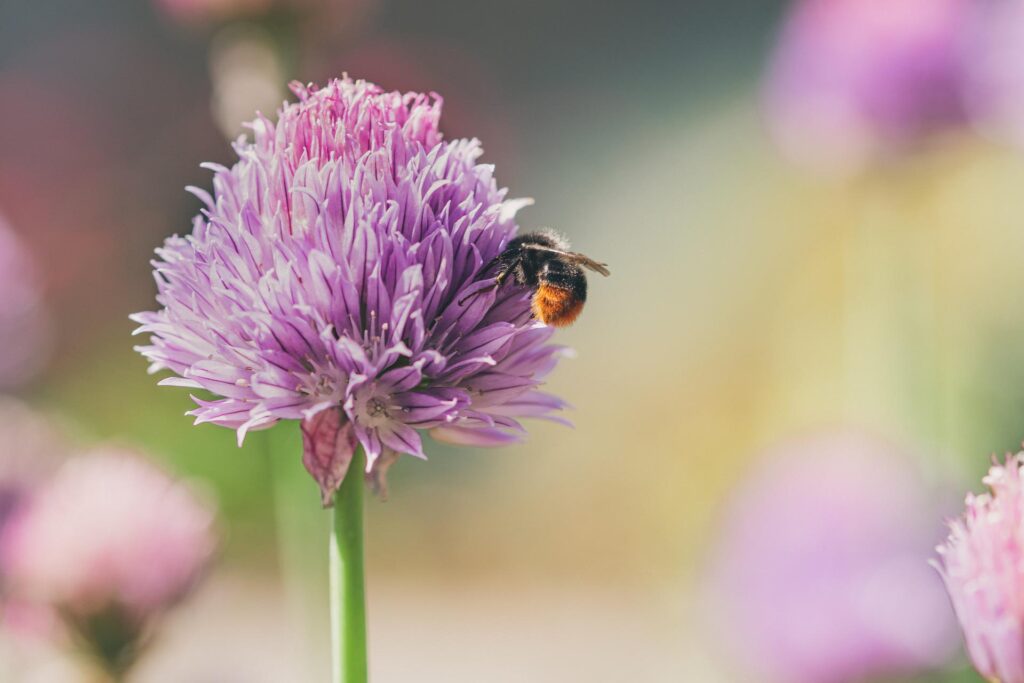
Beyond native plants, there are other pollen- and nectar-rich plants that attract butterflies like:
- Plants in the carrot family (dill, parsley, fennel, etc)
- Sunflowers
- Zinnias
- Cosmos
- Other flowering herbs (like chives, sage, and oregano!)
A good rule of thumb is to look for organically grown, heirloom plants and to avoid hybrid, pollenless, or double-bloom species. Additionally, look for plants that bloom at different times of the year, as well as plants with different colored flowers and flower shapes. Planting in groups of 3 or more can make plants easier for pollinators to feed from and easier to spot from a distance too!
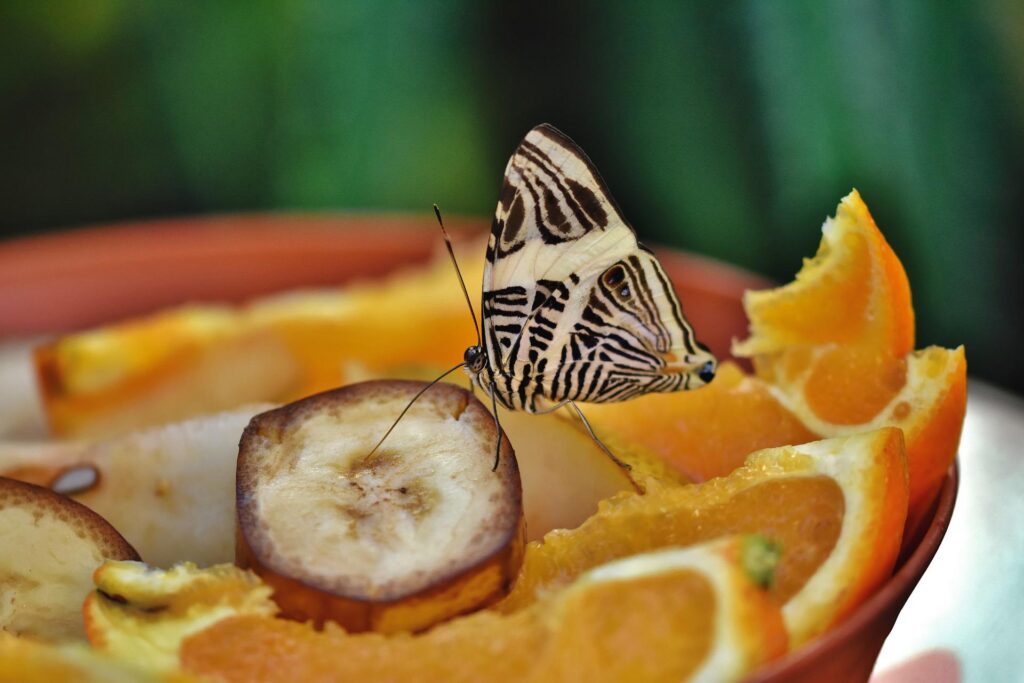
If you’re looking for other ways to attract pollinators beyond plants, you can also try:
- Installing a hummingbird feeder.
Feeders should be cleaned at least twice a week for pollinator health. It’s also wise to use an ant moat to avoid issues with ants and to use dye-free nectar. Red dye isn’t good for hummers! - Create a butterfly feeder.
For a simple DIY, place cut fruit (oranges, apples, and bananas) in a pie tin and place it in a sunny spot. Replace fruit and clean dish daily for pollinator health.
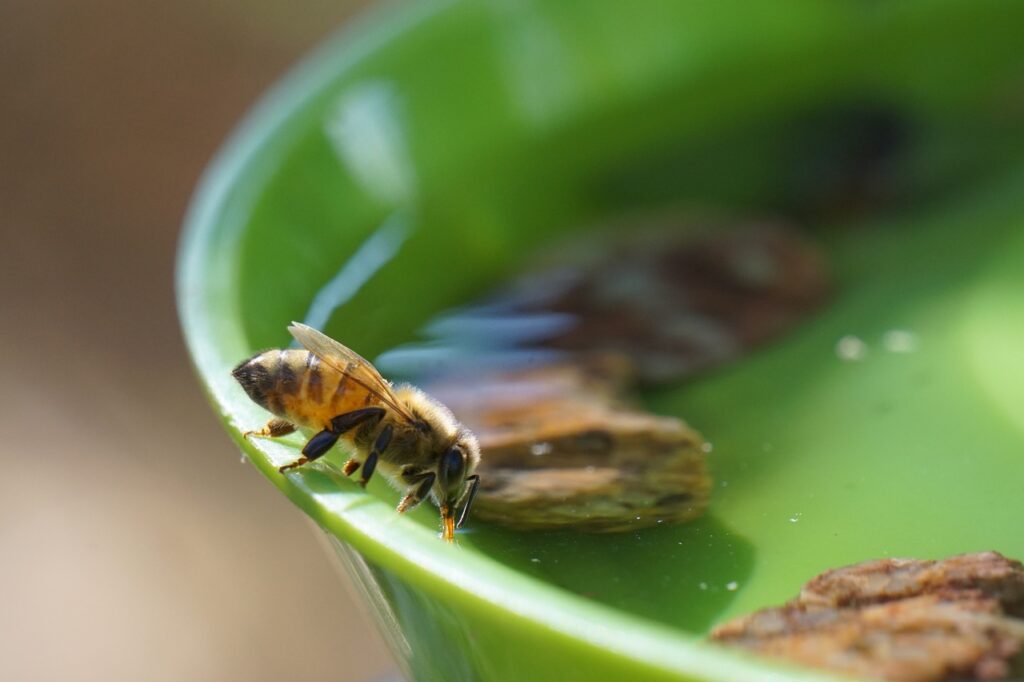
Water
Pollinators need fresh water to drink… and this is especially true on hot summer days. But bird baths are often too large for pollinators and they can pose a drowning hazard for small insects.
While I still use bird baths in my gardens, I pile stones on one side of the bird bath basin to help hapless insects escape if they fall in. You can add a solar powered fountain to your bird bath, which makes it easier for hummingbirds to dip in and out of the water stream. Or use a hose mister attachment.
Another easy way to provide water for pollinators is to let your hose dribble a bit on a bare section of garden soil. Or install a drip irrigation system in your veggie bed to water your plants and provide water for small critters too.
One of my favorite ways to provide water for pollinators is with a DIY pollinator watering dish or “bee pool.” Just fill a terracotta saucer with clean gravel or glass marbles and pour in clean water so it’s just below the gravel line. Place the dish in a sunny spot and clean it out daily for pollinator health.
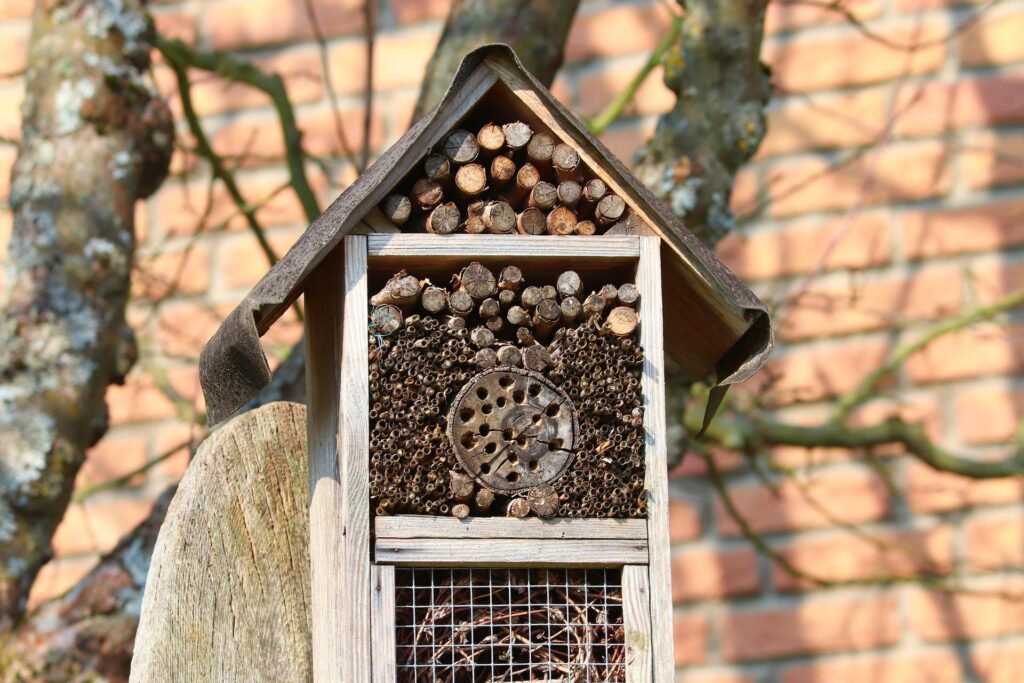
Shelter
Just like us, pollinators need a safe place to snooze the night away, to weather out rain and winter storms, and to raise their young. And that’s where shelters come in!
The best shelters for pollinators are the natural ones. Think native plants with hollow stems, native evergreen trees and other native trees, plants, and shrubs. Pollinators will also hang out in old brush piles, wood piles and compost piles, and adding one of these features (or a dead hedge!) can make your garden more alluring to pollinators.
For even more options, consider allowing a patch of your yard to go wild or convert part of your lawn to a wildflower meadow. And don’t forget: many pollinators overwinter in garden debris and old leaf litter, so don’t be too fussy about cleaning up your garden beds in fall. I usually only remove diseased or damaged plants in autumn and wait until it warms up in spring (temps above 50F!) before cleaning up the remainder of my beds.
Beyond natural shelters, bee hotels and butterfly houses are also handy. These structures can be purchased premade, or you can make them yourself by drilling holes in untreated scrap lumber and/or filling wooden frames with bee nesting materials, like pinecones and bundles of bamboo or twigs.
For best results, locate bee hotels in a sunny area — ideally facing south to provide extra warmth for sleeping bees – and place them at least 4′ off the ground to deter pests. Installing hardware cloth over the front of bee hotels can also deter predators, like woodpeckers. Bee hotels should be cleaned or replaced about once a year for pollinator safety.
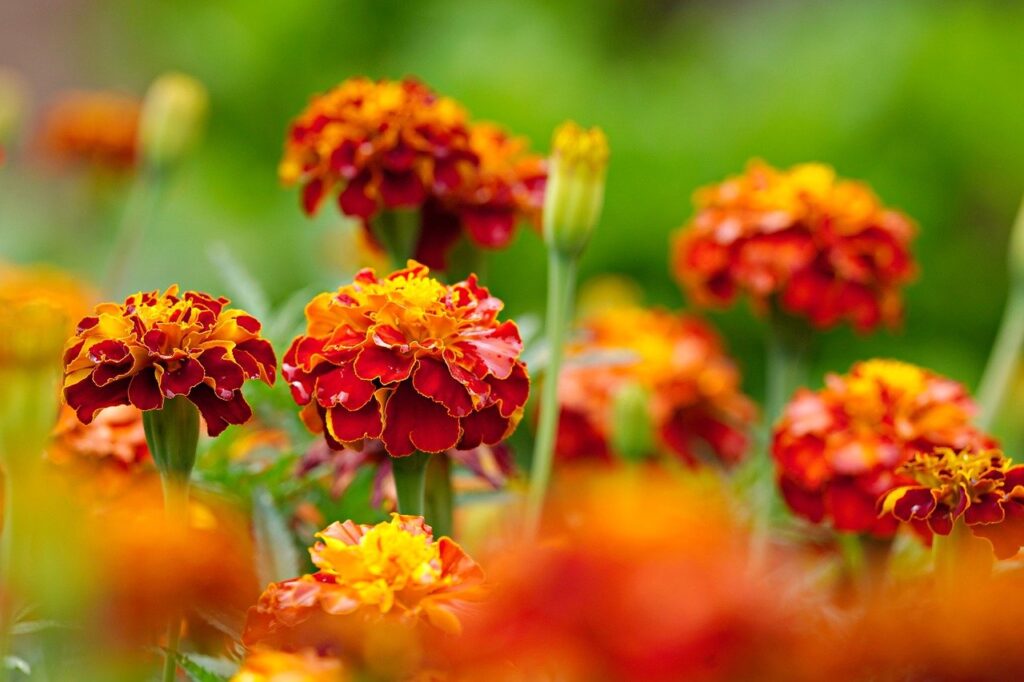
Safety
Of course, if you want to attract pollinators to your garden, you need to make sure your space is as safe for pollinators as possible. And that means choosing organic gardening methods whenever you can.
Crop rotation, companion planting, buying resistant plant cultivars, barrier products (like row covers and fruit protection bags) and cleaning up diseased plant matter in fall are all environmentally friendly pest control options.
If you need to use sprays and powders, opt for organic products like organic insecticidal soap sprays, neem oil, BT thuricide, and food grade diatomaceous earth and know how to apply them.Even organic products can harm pollinators if they’re not applied the right way (and they should never be sprayed directly on flowers!)
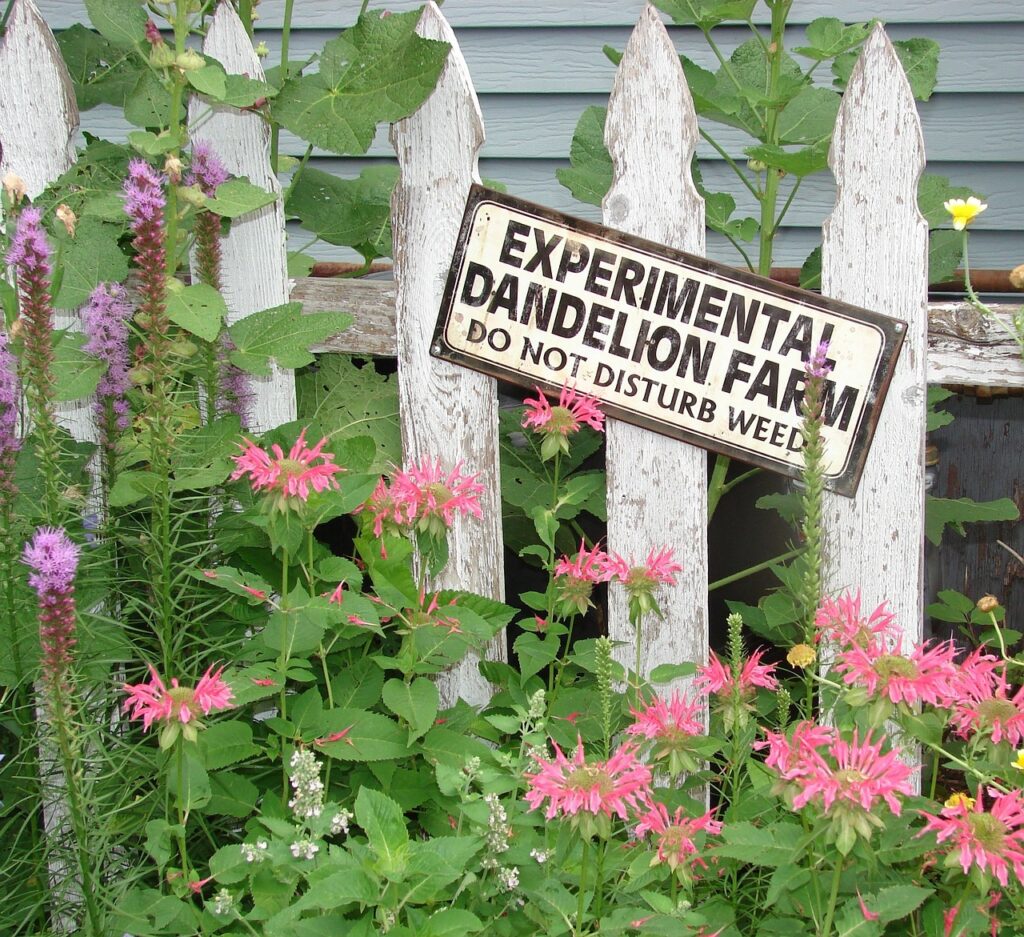
Beyond the Garden: Other Ways to Help Pollinators
Growing a pollinator garden is one way to help pollinators and I particularly love this step because it’s super actionable. If you have a bit of bare soil, you can plant a few plants and help pollinators today! But if you’re looking for even more ways to help pollinators, consider the following suggestions:
- Join an online, pollinator-friendly community
- Attend local, pollinator groups and meetups (cooperative extension offices and local gardens often have details on these sorts of events)
- Shop locally
- Buy organic produce
- Keep your eyes peeled for pollinator-related petitions
- Host a garden party to inspire others
- Attend a native plant sale
- Get your garden certified as a pollinator or wildlife habitat
- Add your garden to the Homegrown National Park map
- Support the work of organizations like the Xerces Society
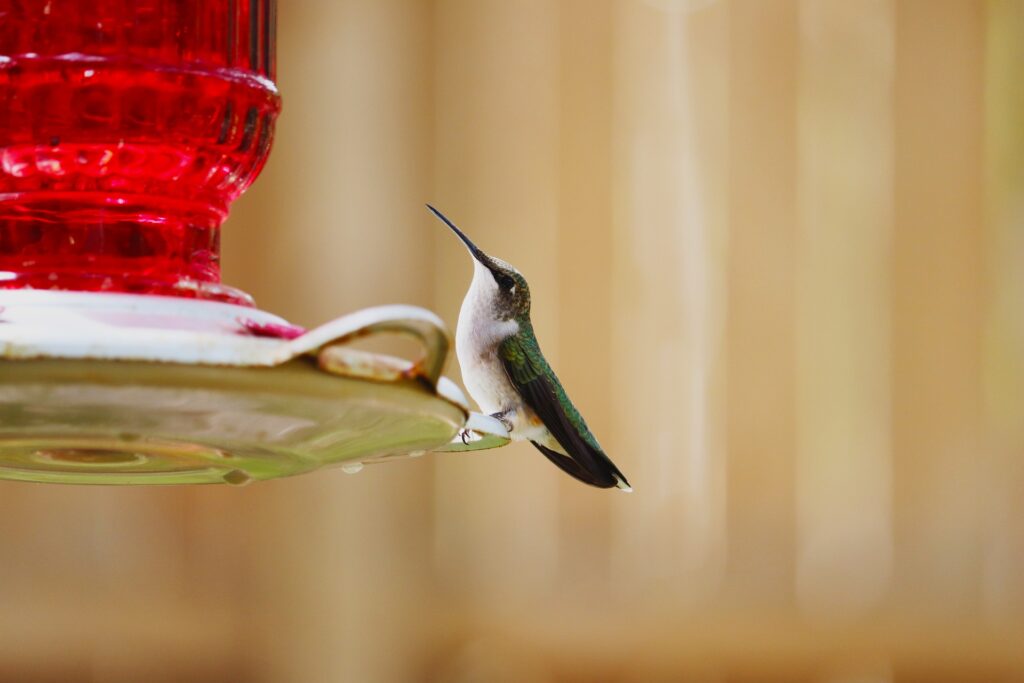
Best Plants for Hummingbirds and Other Frequently Asked Questions
What are the plants that attract hummingbirds?
With the right flowers and hummingbird feeders, you can turn your garden into a hummingbird oasis. For best results, try plants with tubular flowers and plants with lots of orange and red coloration, like cardinal flowers and coral honeysuckle. If you keep a small space garden, you can also try potted plants that attract hummingbirds, like fuchsia and lantana.
What are the flowers that bring butterflies?
Plants and butterflies just get along, but the best plants for butterflies tend to be plants with broad, flat flowers that make easy landing pads. Try out plants like sunflowers, zinnias, and yarrow for butterflies. And don’t forget to grow host plants for butterfly caterpillars, like parsley, dill, and milkweed!
What are the best plants for bees?
Bees love an assortment of plants, but they’re particularly attracted to white, yellow, purple, and blue flowers. Grow plants like salvias, common garden sage, chives and other alliums to attract bees. Bees also love clover lawns!
